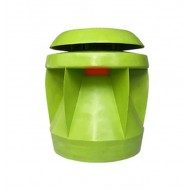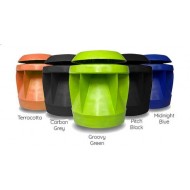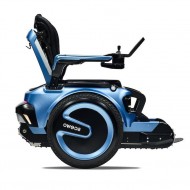Укажите рекомендуемую цену:



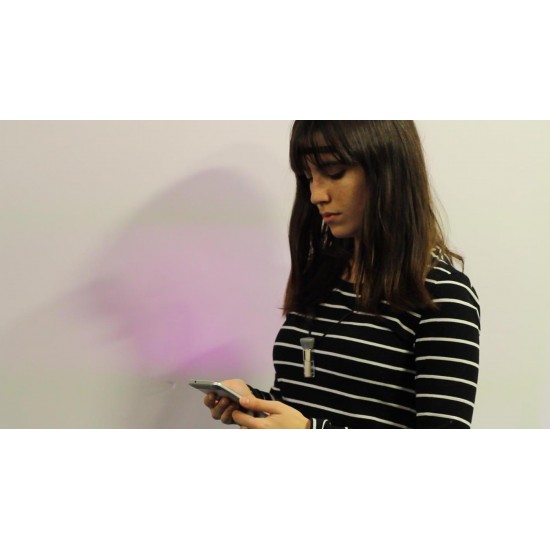
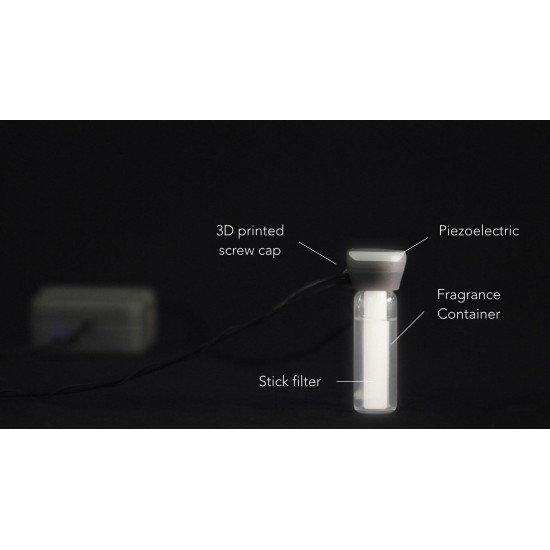
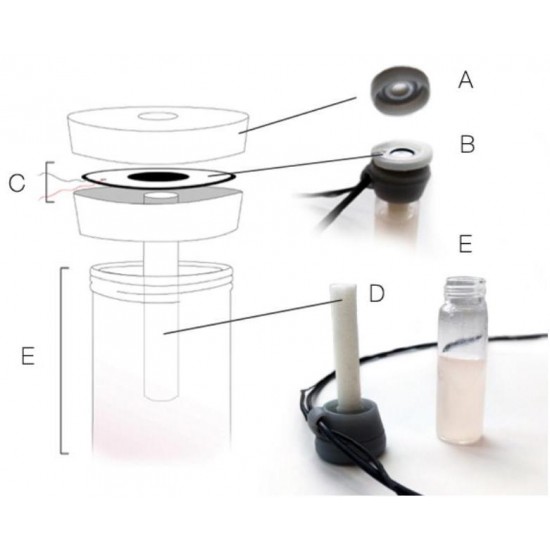

Бесплатно
Pre-Order







Носимое обонятельное устройство Essence MIT Media Lab
Носимое обонятельное устройство Essence MIT Media Lab - Носимые устройства Essence: биометрические обонятельные интерфейсы для работы днем и ночью
Взаимодействие человека с компьютером (HCI) традиционно сосредоточено на разработке и исследовании интерфейсов, обеспечивающих явную визуальную, слуховую или тактильную обратную связь. Мы предлагаем новый тип пользовательского интерфейса, в котором запах используется как неявный, менее осознанный вывод, который по-прежнему влияет на познание человека. Мы сочетаем это с неявной физиологической информацией в качестве входных данных для системы.
В отличие от других модальностей, определенные типы обонятельных стимулов могут предъявляться во время сна, не разбудив субъекта , а также во время бодрствования очень тонким образом, не отвлекая субъекта от его основной деятельности. Это открывает новые возможности для интерфейсов и приложений, которые простираются от времени пробуждения до сна.Исследования показали, что обонятельные стимулы во время сна могут значительно улучшить глубокий сон и качество сна, а также улучшить самооценку настроения и позитивное содержание снов. Более того, когда запах сочетается с усвоенным материалом в течение дня и повторно активируется ночью (целенаправленная реактивация памяти), это улучшает консолидацию памяти. Мы также показали, что, сочетая запахи с опытом виртуальной реальности, мы можем значительно повысить субъективные показатели релаксации и показатели релаксации, связанные с альфа- и тета-частотами мозга.
Мы разработали новые носимые устройства, концепции, программное обеспечение и дизайн, которые значительно улучшили современные ольфактометры. По сравнению с предыдущими системами доставки запахов, используемыми для изучения сна, наш прототип более чем в 40 раз легче и в 700 раз меньше. Современные ароматические технологии, используемые в лабораториях сна, непереносимы и требуют использования носовых масок, больших ольфактометров и минимум 22 проводных насадок для отслеживания физиологической информации. В результате современные технологии не подходят для мобильных, дневных приложений или домашнего использования нетехническими пользователями. Мы разработали, создали и успешно внедрили ароматические технологии, которые могут издавать запах на основе физиологической или контекстной информации, и их можно носить днем и повторно активировать ночью. Обоняние, пожалуй, самое распространенное из всех чувств, но оно также является одним из наименее понятых и наименее используемых в HCI. Мы представляем Essence, первое обонятельное вычислительное ожерелье, которым можно дистанционно управлять через смартфон и которое может изменять интенсивность и частоту испускаемого аромата на основе биометрических или контекстных данных. Значительные усилия в HCI (взаимодействие человека с компьютером) были направлены на то, чтобы сделать взаимодействие с пользователем более плавным, естественным и интегрированным в нашу физическую жизнь. При разработке пользовательских интерфейсов мы стремимся создавать инструменты, которые позволят пользователю выполнять определенные задачи с минимальными усилиями, временем и трудностями. При оценке этих инструментов мы принимаем во внимание восприятие системы отдельными людьми, например полезность, простоту использования и эффективность. Однако мы склонны рассматривать пользователя как сознательно мыслящий ум. На самом деле, большая часть нашего восприятия окружающей среды и нашего поведения является бессознательной и не предполагает сознательного рационального мышления.
Мы воспринимаем мир косвенно, обрабатывая и интерпретируя необработанные данные, полученные от наших органов чувств, а наши мысли и поведение часто зависят от наших органов чувств. Среди так называемых «пяти чувств» обонятельное восприятие занимает исключительное место в неврологической обработке сенсорных стимулов.
Обонятельная луковица напрямую связана с двумя областями мозга, которые контролируют эмоции и воспоминания: миндалевидным телом и гиппокампом. Интересно, что звук, зрение и осязание не проходят через эти области мозга, они проходят через таламус, что является причиной того, что звук, зрение и осязание прерывают сон. Это делает запах особенно интересным для использования во взаимодействии человека с машиной во время сна, а также в состояниях бодрствования, потому что он обрабатывается мозгом, но не так легко нарушает текущие мозговые процессы.
Запах имеет скрытую силу в нашем поведении и бессознательном. Положительные и отрицательные эмоции передаются между людьми не только посредством имитации зрения и слуха, но и через обоняние. Другие исследования показывают, что стресс и беспокойство можно уменьшить с помощью эфирных масел. Недавние открытия показали, что одна ночь обонятельного отвращения во время сна значительно снижает привычку к курению сигарет в состоянии бодрствования и сохраняется в течение нескольких дней. Такие функциональные исследования продолжают оставаться в сфере исследовательских лабораторий. Основная цель Essence заключалась в исследовании и разработке технологии, которую люди могли бы использовать в повседневной жизни без необходимости в медицинской помощи или обременительных устройствах. В нашей статье мы описываем дизайн и реализацию прототипа и описываем потенциальные приложения для HCI.
В то время как запахи широко изучались в психологии, нейробиологии, химии и искусстве, обонятельная система получила меньшее признание в мире персональных технологий. Современные персональные носимые устройства, которые способствуют благополучию, такие как фитнес-трекеры и трекеры сна, в основном используют визуальные, слуховые и тактильные стимулы. Исследовательское сообщество HCI ранее рассматривало некоторые проблемы и возможности технологии, основанной на запахах. Последние исследования HCI и разработки продуктов были сосредоточены на том, чтобы аромат стал частью цифровых коммуникаций. Большинство систем используют готовые ароматы в своих прототипах, сосредоточив исследовательские усилия на самом устройстве.
Мы предлагаем Essence, носимый обонятельный дисплей, который был разработан, чтобы быть легким, модным и достаточно удобным, чтобы люди могли использовать его в повседневной жизни. Основным вкладом, который отличается от предыдущей работы, является дизайн модного обонятельного ожерелья с беспроводным управлением, которое можно использовать в повседневных жизненных ситуациях, а также автоматическое управление этим устройством на основе контекстных и физиологических данных пользователя. Мы также предлагаем набор новых приложений для этого типа технологий, которые используют биометрическую и контекстную информацию, чтобы вмешиваться в запахи в определенных случаях.
Взаимодействие человека с компьютером (HCI) традиционно сосредоточено на разработке и исследовании интерфейсов, обеспечивающих явную визуальную, слуховую или тактильную обратную связь. Мы предлагаем новый тип пользовательского интерфейса, в котором запах используется как неявный, менее осознанный вывод, который по-прежнему влияет на познание человека. Мы сочетаем это с неявной физиологической информацией в качестве входных данных для системы.
В отличие от других модальностей, определенные типы обонятельных стимулов могут предъявляться во время сна, не разбудив субъекта , а также во время бодрствования очень тонким образом, не отвлекая субъекта от его основной деятельности. Это открывает новые возможности для интерфейсов и приложений, которые простираются от времени пробуждения до сна.Исследования показали, что обонятельные стимулы во время сна могут значительно улучшить глубокий сон и качество сна, а также улучшить самооценку настроения и позитивное содержание снов. Более того, когда запах сочетается с усвоенным материалом в течение дня и повторно активируется ночью (целенаправленная реактивация памяти), это улучшает консолидацию памяти. Мы также показали, что, сочетая запахи с опытом виртуальной реальности, мы можем значительно повысить субъективные показатели релаксации и показатели релаксации, связанные с альфа- и тета-частотами мозга.
Мы разработали новые носимые устройства, концепции, программное обеспечение и дизайн, которые значительно улучшили современные ольфактометры. По сравнению с предыдущими системами доставки запахов, используемыми для изучения сна, наш прототип более чем в 40 раз легче и в 700 раз меньше. Современные ароматические технологии, используемые в лабораториях сна, непереносимы и требуют использования носовых масок, больших ольфактометров и минимум 22 проводных насадок для отслеживания физиологической информации. В результате современные технологии не подходят для мобильных, дневных приложений или домашнего использования нетехническими пользователями. Мы разработали, создали и успешно внедрили ароматические технологии, которые могут издавать запах на основе физиологической или контекстной информации, и их можно носить днем и повторно активировать ночью. Обоняние, пожалуй, самое распространенное из всех чувств, но оно также является одним из наименее понятых и наименее используемых в HCI. Мы представляем Essence, первое обонятельное вычислительное ожерелье, которым можно дистанционно управлять через смартфон и которое может изменять интенсивность и частоту испускаемого аромата на основе биометрических или контекстных данных. Значительные усилия в HCI (взаимодействие человека с компьютером) были направлены на то, чтобы сделать взаимодействие с пользователем более плавным, естественным и интегрированным в нашу физическую жизнь. При разработке пользовательских интерфейсов мы стремимся создавать инструменты, которые позволят пользователю выполнять определенные задачи с минимальными усилиями, временем и трудностями. При оценке этих инструментов мы принимаем во внимание восприятие системы отдельными людьми, например полезность, простоту использования и эффективность. Однако мы склонны рассматривать пользователя как сознательно мыслящий ум. На самом деле, большая часть нашего восприятия окружающей среды и нашего поведения является бессознательной и не предполагает сознательного рационального мышления.
Мы воспринимаем мир косвенно, обрабатывая и интерпретируя необработанные данные, полученные от наших органов чувств, а наши мысли и поведение часто зависят от наших органов чувств. Среди так называемых «пяти чувств» обонятельное восприятие занимает исключительное место в неврологической обработке сенсорных стимулов.
Обонятельная луковица напрямую связана с двумя областями мозга, которые контролируют эмоции и воспоминания: миндалевидным телом и гиппокампом. Интересно, что звук, зрение и осязание не проходят через эти области мозга, они проходят через таламус, что является причиной того, что звук, зрение и осязание прерывают сон. Это делает запах особенно интересным для использования во взаимодействии человека с машиной во время сна, а также в состояниях бодрствования, потому что он обрабатывается мозгом, но не так легко нарушает текущие мозговые процессы.
Запах имеет скрытую силу в нашем поведении и бессознательном. Положительные и отрицательные эмоции передаются между людьми не только посредством имитации зрения и слуха, но и через обоняние. Другие исследования показывают, что стресс и беспокойство можно уменьшить с помощью эфирных масел. Недавние открытия показали, что одна ночь обонятельного отвращения во время сна значительно снижает привычку к курению сигарет в состоянии бодрствования и сохраняется в течение нескольких дней. Такие функциональные исследования продолжают оставаться в сфере исследовательских лабораторий. Основная цель Essence заключалась в исследовании и разработке технологии, которую люди могли бы использовать в повседневной жизни без необходимости в медицинской помощи или обременительных устройствах. В нашей статье мы описываем дизайн и реализацию прототипа и описываем потенциальные приложения для HCI.
В то время как запахи широко изучались в психологии, нейробиологии, химии и искусстве, обонятельная система получила меньшее признание в мире персональных технологий. Современные персональные носимые устройства, которые способствуют благополучию, такие как фитнес-трекеры и трекеры сна, в основном используют визуальные, слуховые и тактильные стимулы. Исследовательское сообщество HCI ранее рассматривало некоторые проблемы и возможности технологии, основанной на запахах. Последние исследования HCI и разработки продуктов были сосредоточены на том, чтобы аромат стал частью цифровых коммуникаций. Большинство систем используют готовые ароматы в своих прототипах, сосредоточив исследовательские усилия на самом устройстве.
Мы предлагаем Essence, носимый обонятельный дисплей, который был разработан, чтобы быть легким, модным и достаточно удобным, чтобы люди могли использовать его в повседневной жизни. Основным вкладом, который отличается от предыдущей работы, является дизайн модного обонятельного ожерелья с беспроводным управлением, которое можно использовать в повседневных жизненных ситуациях, а также автоматическое управление этим устройством на основе контекстных и физиологических данных пользователя. Мы также предлагаем набор новых приложений для этого типа технологий, которые используют биометрическую и контекстную информацию, чтобы вмешиваться в запахи в определенных случаях.
- Запас: Pre-Order
- Модель: Essence
$0.00
Без НДС: $0.00















